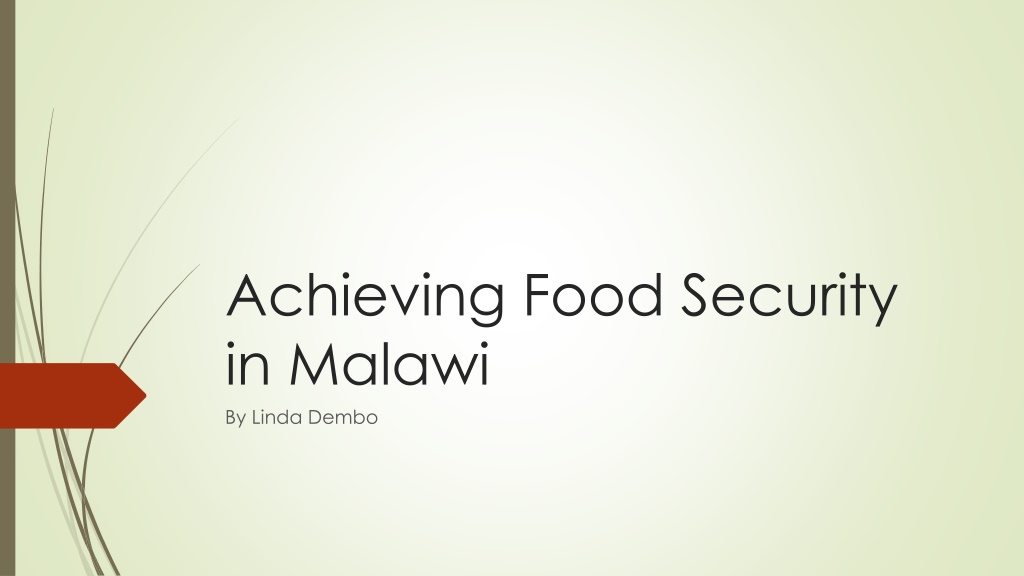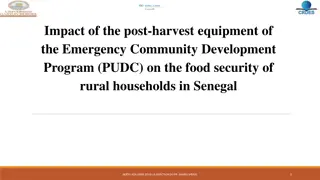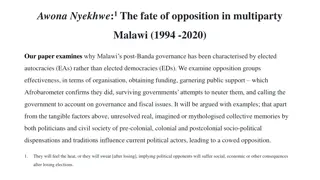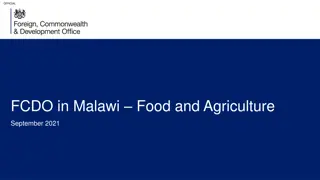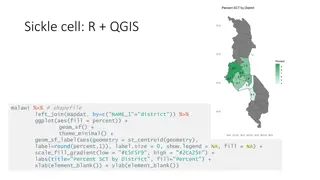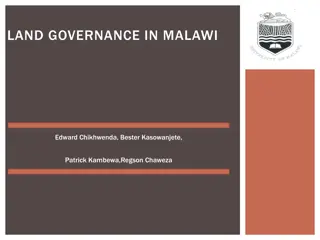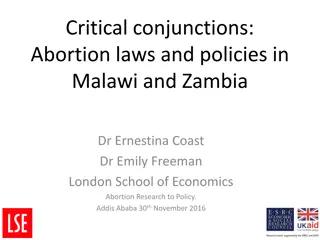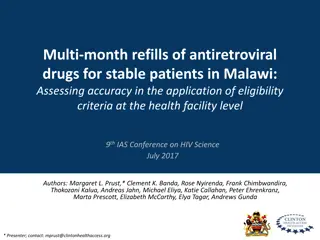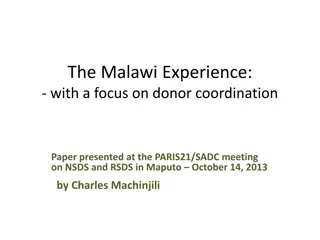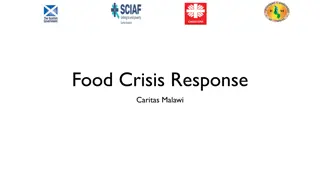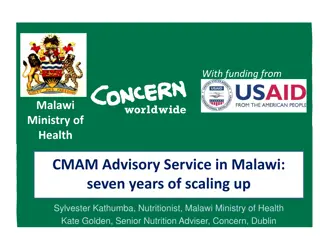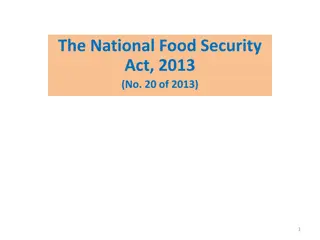Enhancing Food Security in Malawi: Challenges and Solutions
Agriculture plays a vital role in Malawi's economy, with 30% contribution to GDP, 90% to export earnings, and 70% employment. However, the country faces food insecurity due to factors like chronic poverty, low agricultural productivity, poor infrastructure, and limited arable land. Natural disasters exacerbate the situation. Improving food utilization practices and promoting knowledge about nutrition are crucial to addressing these challenges.
Download Presentation

Please find below an Image/Link to download the presentation.
The content on the website is provided AS IS for your information and personal use only. It may not be sold, licensed, or shared on other websites without obtaining consent from the author. Download presentation by click this link. If you encounter any issues during the download, it is possible that the publisher has removed the file from their server.
E N D
Presentation Transcript
Achieving Food Security in Malawi By Linda Dembo
Background Information According National Geographic Society, Agriculture is the art and science of cultivating the soil, growing crops and raising livestock. It includes the preparation of plant and animal products for people to use and their distribution to markets.Agriculture provides most of the world s food and fabrics. Cotton, wool, and leather are allagricultural products. Malawi heavily relies on Agriculture for its socio-economic development. Agriculture contribute 30% to Malawi s GDP, 90% to export earnings and provides 70% employment (Ministry of Agriculture, Irrigation and Water Development in 2020)
Causes of Food Insecurity in Malawi Chronic poverty low agricultural productivity Poor infrastructure Ecological constraints Inappropriate economic policies Limited arable land
Challenges Natural disasters, such as drought, floods and crop destruction by pests and diseases, have had adverse effects on the country s national food supply situation. Poor land use management and inadequate use of fertilizers exacerbate the effects of natural disasters. Food Utilization in Malawi is generally poor. Inadequate knowledge about food values, food choices, combinations of the Malawi Six Food Groups, childcare and feeding practices, gender issues, and intra-household distribution of food affect the way households benefit nutritionally from the available foods. The current nutrition education primarily targets women and yet decision makers at household level are men.
Vegetable Group A vegetable is a part of a plant consumed by humans that is generally savory but is not sweet. For example, broccoli. Contains many Vitamins such as vitamin A, vitamin C, iron and calcium Grains Group These foods provide complete carbohydrates , which are a good source of energy and provide much nutrition when unrefined. For example rice.
Fruits Fruits are sweet and bear seeds like the apple and sometimes they do not bear seeds. Some fruits are not sweet like tomatoes. Fruits are low in calories and fat and are a source of natural sugar, fiber and vitamins Dairy Products Dairy is produced from the milk of mammals, usually but not exclusively cattle. They include milk, yogurt and cheese. Dairy are rich in calcium and also provide protein, phosphorus, vitamin A, and vitamin D. However, many dairy products are high in saturated fat and cholesterol compared to vegetables, fruits and whole grains, which is why skimmed products are available as an alternative.
Meat Meat is the tissue, the muscle of the animal consumed by humans. Meat is rich in iron, zinc, and vitamin B12. Some examples of meat include beef, chicken, and salmon Oils and Sweets These are at the top of the pyramid and provide a lot of calories. These include oils, soft drinks, etc.
Recommendations Integrate sustainable agricultural practices such as Conservation Agriculture which includes crop rotation, intercropping, planting drought or flood resistant crops Gender equity and empowerment Capacity Building
